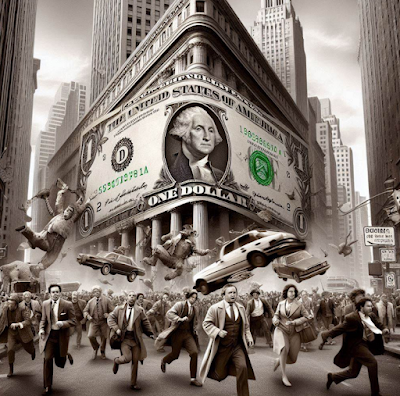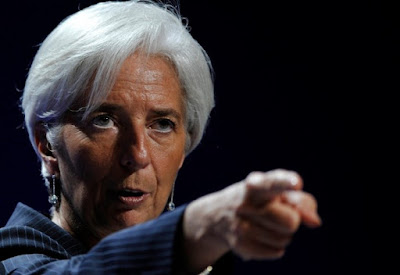Can Saving Possibly “Undermine Economic Growth”?In his speech at the New York Federal Reserve of New York on October 5, 2016, the Federal Reserve Vice Chairman Stanley Fischer has suggested that a visible decline in the natural interest rate in the US could be on account of the world glut of saving. According to Fischer, both increased saving and reduced investments have potentially significantly lowered the natural rate of interest. For Fisher and other commentators this could signify that the economy might have fallen into a situation where increased saving undermines the economic growth Most economists are in agreement that in order to grow an economy, saving is a must. It is saving that funds investment in capital goods like computers, tools, and machinery, which in turn, make the economy more productive. It is argued that, while saving plays an important role in growing an economy, sometimes too much saving can actually be a bad thing. |
 Stanley Fischer points out where the imaginary savings glut he believes to have spotted is hiding. Photo credit: - Click to enlarge |
| For instance, it is held that if consumer demand is weak, then more savings will only undermine consumer expenditure and weaken economic growth. After all, it is held, the motor of the economy is consumer expenditure and saving is the opposite of consumption.
According to this way of thinking, if people decide on saving a large proportion of their income, then only a small quantity of output will find a market. Output will have to be low because there will be no demand for larger quantities of production. Also, it is held that while saving may pave the road to riches for an individual, if the nation as a whole decides to save more, the result may be poverty for all. The supposed natural interest rate – unfortunately, it is actually impossible to measure and isolate the level of the natural rate, so even if we assume it to be true that it has decreased, this chart is actually bogus. Note also that according to this chart, the natural rate was negative at some point. This is simply impossible. While gross market interest rates in the form of bond yields can indeed fall into negative territory, the natural rate can never be zero or negative – not as long as time passes for all of us, and there is a sooner and a later. |
Natural Interest Rate |
What Is Saving?If John the baker produces ten loaves of bread and consumes two loaves his savings is eight loaves of bread. The baker’s savings is his production of bread minus the amount of bread that he consumed. The baker’s saving now permits him to secure other goods and services. For instance, he can now exchange his saved bread for other consumer goods or he can exchange it for oven parts and tools. By exchanging his bread for other consumer goods, the baker can expand the variety of final goods that he can consume at present. The exchange of his saved bread for oven parts and tools will enable the baker to enhance the oven, which, in turn, will make it possible for him to raise the quality and the quantity of the production of bread. Note that it is the bakers’ decision that determines how much of his stock of saved bread will be allocated for his personal consumption and how much allocated toward the buying of oven parts and tools. Also, note that by exchanging his saved bread for oven parts and tools, the baker transfers his saved bread to the producers of parts and tools. The bread, coupled with other final consumer goods, maintains these producers’ lives and well being and allows them to continue in their production activities. Observe that saving here supports the consumption of the baker and the producers of parts and tools. Also, note that when the baker exchanges his saving for final consumer goods and for tools and parts, he pays for them with his savings. His means of payments are saved loaves of bread. |
 Bakers hard at work. If they keep this up, they will soon have enough bread to exchange it for tools. This will sustain the life and well-being of assorted tool makers. - Click to enlarge |
Is It Possible to Have Too Much Saving?This is like asking if we can have too much real wealth. The greater the pool of saved final consumer goods, the better the quality and the quantity of tools and machinery that can be made, which, in turn, gives rise to a greater production of final consumer goods, i.e., an increase in living standards. Saving can never be bad for economic growth. Furthermore, as we have seen, saving is entirely absorbed in the consumption of the producers of final consumer goods and the producers of tools and machinery, i.e., capital goods producers. So, if saving is the key for wealth generation, then it is absurd to suggest that it may be good for individuals but not necessarily good for the nation as a whole. Since a nation without individuals doesn’t exist, saving being good for individuals must be also good for the nation. What about the commonly accepted view that the driving force of an economy is consumer demand for goods and services? In this way of thinking, what poses a threat to economic activity is the scarcity of demand. There is, however, never a problem with demand. What always matters is having enough means to support demand. |
 Piggy Bank - Click to enlarge According to Fischer, Bernanke, Yellen et al., this is simply too much! Evil savers are dragging down the economy and need to be punished! As Martin Wolf, chief economics commentator of the FT once averred verbatim: “Cautious savers no longer serve a useful economic purpose. Wipe out rentiers with cheap money”. This is what passes for economic science nowadays! Photo credit: Senior Living |
There is not too much Saving – There is too much Money CreationLet us now examine the effect of monetary expansion on the pool of real savings. The expanded money supply was never earned, i.e., goods and services do not back it up, so to speak—it was created out of “thin air.” When such money is exchanged for goods it amounts to consumption that is not supported by production. Consequently, a holder of honest money, i.e., an individual who has produced real wealth that wants to exercise his claim over goods, discovers that he cannot get back all the goods he previously produced and exchanged for money. He discovers that the purchasing power of his money has fallen. The printing of money undermines wealth generators and thereby weakens the pool of real savings over time. (By being now poorer wealth generators can afford fewer saving than before — their time preferences are likely to increase.) In a world without central banks and fractional reserve banking the difference between money income and monetary expenditure on consumer goods, i.e., monetary saving will be a true reflection of the state of savings. This is not going to be so in the world where money is generated out of “thin air.” In this case an increase in the difference between the money income (on account of an increase in money supply) for a given amount of monetary expenditure on consumer goods shouldn’t be regarded as an increase in saving. In fact such an increase should be regarded as bad news for the process of real wealth formation and the pool of real savings. |
US Money Supply TMS-2 and Total Bank CreditThe broad true US money supply TMS-2 and total bank credit outstanding. Society as a whole has not become “richer” by one iota on account of the money supply having been boosted to such an astonishing extent – however, the distribution of real wealth has certainly changed as a result. No-one should be surprised about the incessant complaints over growing wealth inequality – it is a direct result of monetary pumping – click to enlarge. |
| Now, the pronouncements of various Fed officials such as Stanley Fischer and the former Fed Chairman Ben Bernanke that a downtrend in the natural interest rate, among other factors, is on account of a strong increase in savings are questionable . We suggest, that this downtrend is not on account of a glut of saving but on account of the Fed’s policy of monetary pumping and tampering with interest rates in order to bring the economy onto an imaginary growth path of price stability.
Note that the Fed has been aggressively lowering its policy interest rate since May 1981. The federal funds rate target was lowered from 19% in May 1981 to 0.5% by June this year. In response to the Fed’s loose monetary stance our monetary measure (AMS) increased by 882% between May 1981 to June 2016. A long term chart of Money AMS (the Adjusted Money Supply, a measure of the narrow US money supply in accordance with Austrian monetary theory). The amount of money in the economy has soared in recent decades. When a truckload of additional “money” is printed every year, it does not equate to an increase in savings. It only means that the money supply has increased. Ben Bernanke and many other mainstream economists are constantly confusing real savings with imaginary numbers in bank accounts. |
Money AMS
|
Conclusion
A possibility that the US economy might have fallen into a situation where loose monetary policy couldn’t “revive” economic activity any longer could be indicative that the pool of real wealth and the pool of real savings are in serious trouble.
A massive monetary explosion since the early 1980s on account of the onset of financial deregulation has likely severely undermined the process of real wealth formation.
So from this perspective it is quite possible that the US economy might be in a phase of prolonged subdued economic growth. Again this is not on account of too much savings but on account of too much monetary pumping.
To revive the economy what is required is not to increase government outlays in order to lift the aggregate demand as suggested by many experts. What is required is to actually drastically reduce government outlays and the Fed’s activities in financial markets. This will provide more scope for the private sector to get on with the business of real wealth generation and to meaningfully revive the economy.
Charts by AASE (Applied Austrian School Economics), St. Louis Federal Reserve Research
Chart and image captions by PT
This article was originally published at the Mises Institute.
Full story here Are you the author? Previous post See more for Next post
Tags: Ben Bernanke,Federal Reserve,newslettersent,On Economy,Stanley Fischer










































